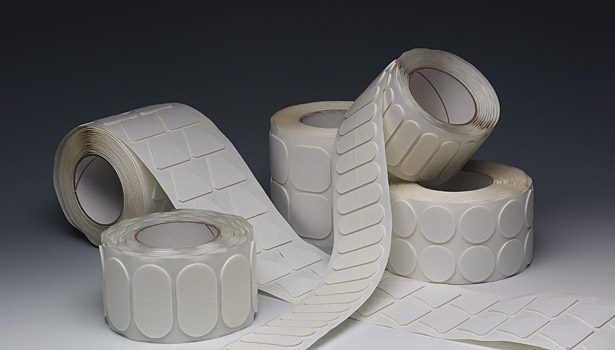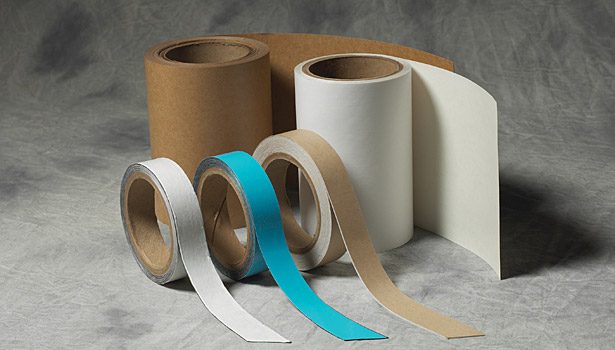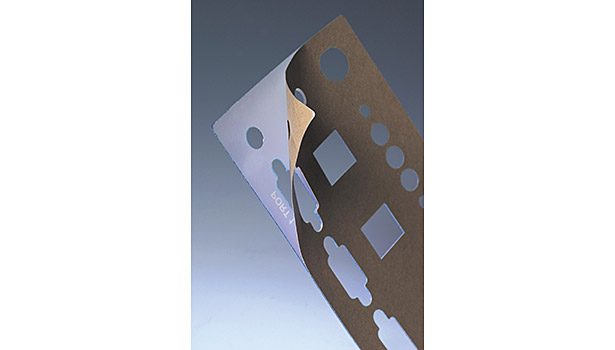Choosing the right adhesive for a specific application is not always simple. Many articles have been devoted to discussing the topic, often focusing on how the end use of a given pressure-sensitive adhesive (PSA) product should play into the decisions. However, these articles often overlook a crucial step in the production process that can also affect PSA performance: converting.
Why Care About Converting?
While the trip a label takes through the wide, speedy presses of a modern converting facility may not always be top of mind for adhesive suppliers, it can have a significant impact on an adhesive’s efficacy. Converting is important to ensuring that a final PSA product not only looks right, but functions properly as well. The more they understand and can explain the details of the converting process a given PSA product undergoes, the better an adhesive supplier can recommend the proper adhesive for the job.
Some basic considerations of the converting process include:
• What sort of printing press type will be used? Will it be web/roll-fed or sheet-fed?
• How wide is the press? How fast will it be running?
• What sort of operations will be carried out in the converting process?
• What types of die cuts will be used? Will there be internal face or liner die cuts and/or splits?
• Will embossing, overlays, foil stamping or varnishes be applied?
• What are the converting operating temperatures/environmental conditions?
• Could additional nuances to the converting process affect the adhesive?
It may be difficult to see the direct correlation between converting process attributes and adhesive selection, but the information does help. For example, aggressive or softer adhesives can stick to, or begin to follow, any idler or driven roll they come into contact with, leading to matrix breaks. Countermeasures such as the incorporation of low-surface-tension wraps around the rollers can help address this issue. In other cases, petroleum-based sprays can cause adhesives to become more aggressive; using a spray wax can prevent adhesives from becoming tackier. Fixes to adhesive-related converting challenges are available, but if suppliers do not know the details of the converting process, they cannot recommend a solution.
Beyond specifics surrounding converting equipment, be sure to inform suppliers of other processing specifics as well. In addition to conveying information about a PSA product’s end use, answer the following questions:
• What type of facestock is being used? What is the basis weight or caliper?
• What type of liner are you using? What is the basis weight or caliper?
• Is the coat weight of the adhesive standard?
• Will labels be auto- or hand-applied?
Much like end-use adhesion performance requirements, the adhesive supplier must carefully understand how to select an adhesive so that all components are matched appropriately. Adhesives can perform differently in the converting process with various facestocks and liners; therefore, it is important for a supplier to know the specifics of the construction when choosing an adhesive. Certain adhesives may be more or less forgiving in various converting processes due to their specific attributes and intended functions. For example, a high-tack, high-coat-weight adhesive designed for adhering to rough limited surface areas can be difficult to convert, especially if the label design is complex. Many of these problems can be avoided through effective and thorough communication.
It’s important to consider the current converting process norm of reducing raw material basis weight and/or caliper. Failure to account for these trends can lead to dies cutting too deeply, resulting in failures in auto-apply equipment or even removing the label by hand. Thinner facestocks can equate to weaker strength, creating difficulty in matrix removal (“weeding”) during the converting process. An adhesive with excellent die cutting and converting characteristics can help overcome these thinner and weaker laminates. Such problems could be easily avoided if an adhesive supplier is advised of the desired construction and process specifics.
Asking Smart Questions
With expedited processing comes additional risk; take the extra effort to talk through the journey of a PSA product—from raw materials to end-use application—to ensure you make the right choices. With current pressures to take cost and time out of processes, it is easy to fall into the trap of choosing products that seem like they should work, especially if they have worked in the past. Whether the converting process changes or not, there may be subtle changes in your PSA application that should be addressed. For example, fibers in modern cardboard are now shorter than before, and plastics are often being produced thinner. These changes could affect the way an adhesive sticks to these substrates. Adhesive suppliers need to be aware of such subtle shifts to help foresee and forestall issues.
In addition, if you have a sample from a similar application or any historical knowledge of how products have performed in the past, it is helpful to share this with the supplier. Also, don’t stop with testing PSA products in an end-use environment; it is a good idea to convert sample material to make sure all possible variables have been foreseen. Collaborate with a trusted supplier that has broad knowledge of adhesive technologies and exposure to customers creating a variety of products. And remember: the more intimate your knowledge of your product, the better results you’ll ultimately experience.
For more information, contact the author at (330) 689-3909 or crbraham@bemis.com, or visit www.mactac.com.





